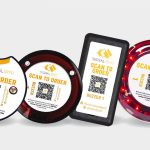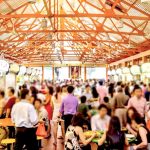Singapore has gone through the ciruit breaker from 1st May to 2nd June 2020, and eventually even transitioning past Phase 1 to Phase 2 of the government’s master plan to fight against the current COVID-19 pandemic.
Phase 2, beginning the 19th of June 2020, introduces a larger wave of businesses that would be able to resume businesses. One of the most significant restriction being lifted would be the permission to begin dining out again – albeit within the limit of groups of 5.
Unfortunately, unlike cafes, hawkers, food courts, bubble tea shops and restaurants – bars are still not allowed to resume business.
Hopefully, Singapore will be able to gradually find a balance to both manage societal needs and curb the infection of COVID-19. Just like almost everyone, we do hope to resume life as what it once was, before the spread of this virus.
How a Paging System would help in this pandemic
Even though a limit of 5 people per group for dining exists; it is still everyone’s responsibility to adhere to social distancing measures. People should distance themselves at least 1m apart from each other.
SIGNALGRYD has helped F&B businesses such as cafes, restaurants and hawkers to better manage their crowd by allowing customers to disperse after placing their order through the use of a self-service paging system. Customers would be able to roam around the vicinity, or sit at their tables, away from crowds whilst waiting for their order to be prepared.
Wireless operation without an internet connection
They can then be wirelessly alerted through vibration and audible cues on the pager when their food is ready for pick-up. The far ranging paging systems have range varying from 400m upwards to 700m depending on model.
In our own testing, from our office in Singapore Shopping Centre at level 6, both Series Pacific and V2020 Classic model were able to reach until the Basement of Plaza Singapura. SIGNALGRYD paging systems were also used in various large hawker centres such as Bedok 85 and large food courts at Changi Airport amongst others.
Water resistance
The pagers are water resistant, which allows for ease of cleaning upon each use. Given the current virus situation, it is recommended to disinfect the pagers upon each use. A wipe down with alcohol wipes would usually suffice.
Low maintenance
The customer paging system are built to be low maintenance and durable. In addition to the water resistance – some pager models come with rubber edges along the sides to be resistant to impact through shock absorption. Built with industrial grade ABS plastic, most impact are thoughtfully designed to spread the shock of the impact across the whole surface area.
Other notable features
Essentially, it is a simple, intuitive communication system to help F&B business better manage their queues and crowd through the use of a self-service paging system that allows customers to disperse and roam. The ease of use is due to its fuss free plug-and-play implementation, as well as smart charging capabilities. Use when needed, and leave it to charge when you don’t.
Video Introduction
Why not an App?
We’ve covered the advantages and disadvantages of physical pagers against mobile apps way back in 2016 and 2017.
It is now 2020 – how is the market sentiment now?
Although mobile apps are no stranger to anyone in current times – we think mobile apps for food alert is still in its infancy. Although mobile ordering has been on the rise, many businesses still are not adopting these new changes.
What this pandemic has taught us, and especially with the Singapore Government strong push towards digitization – we think now in 2020, we are getting there.
Until then, or until both the food ordering, food alert and collection reminders can be integrated into any mobile phone – we think people would still prefer the traditional methods.






